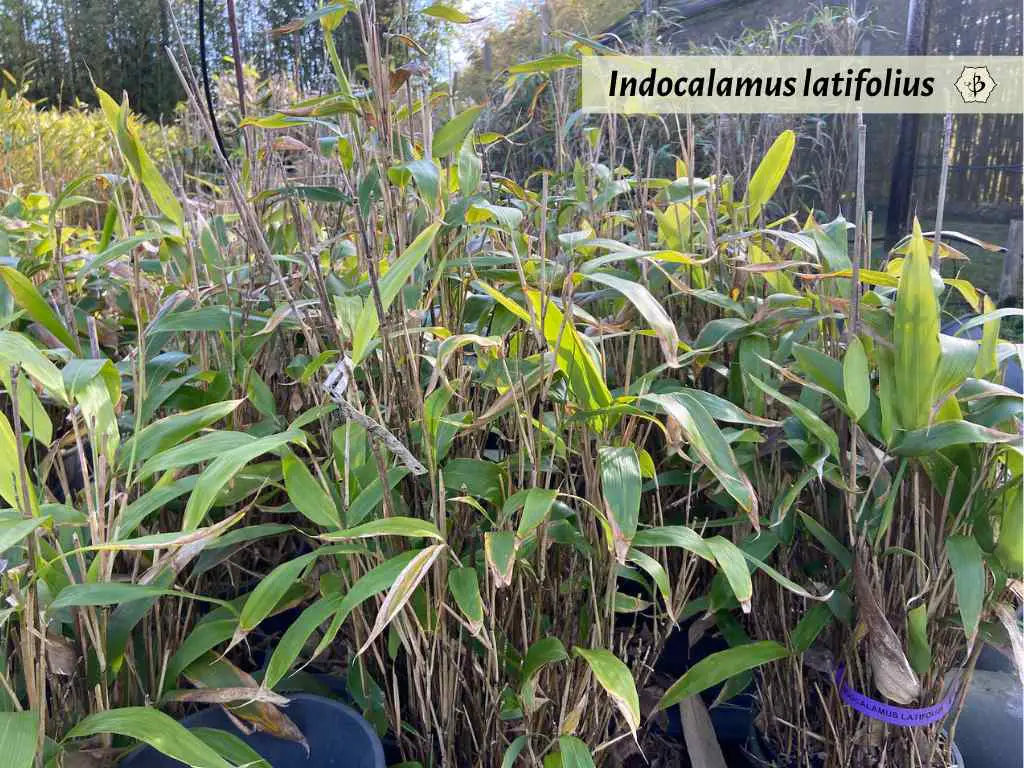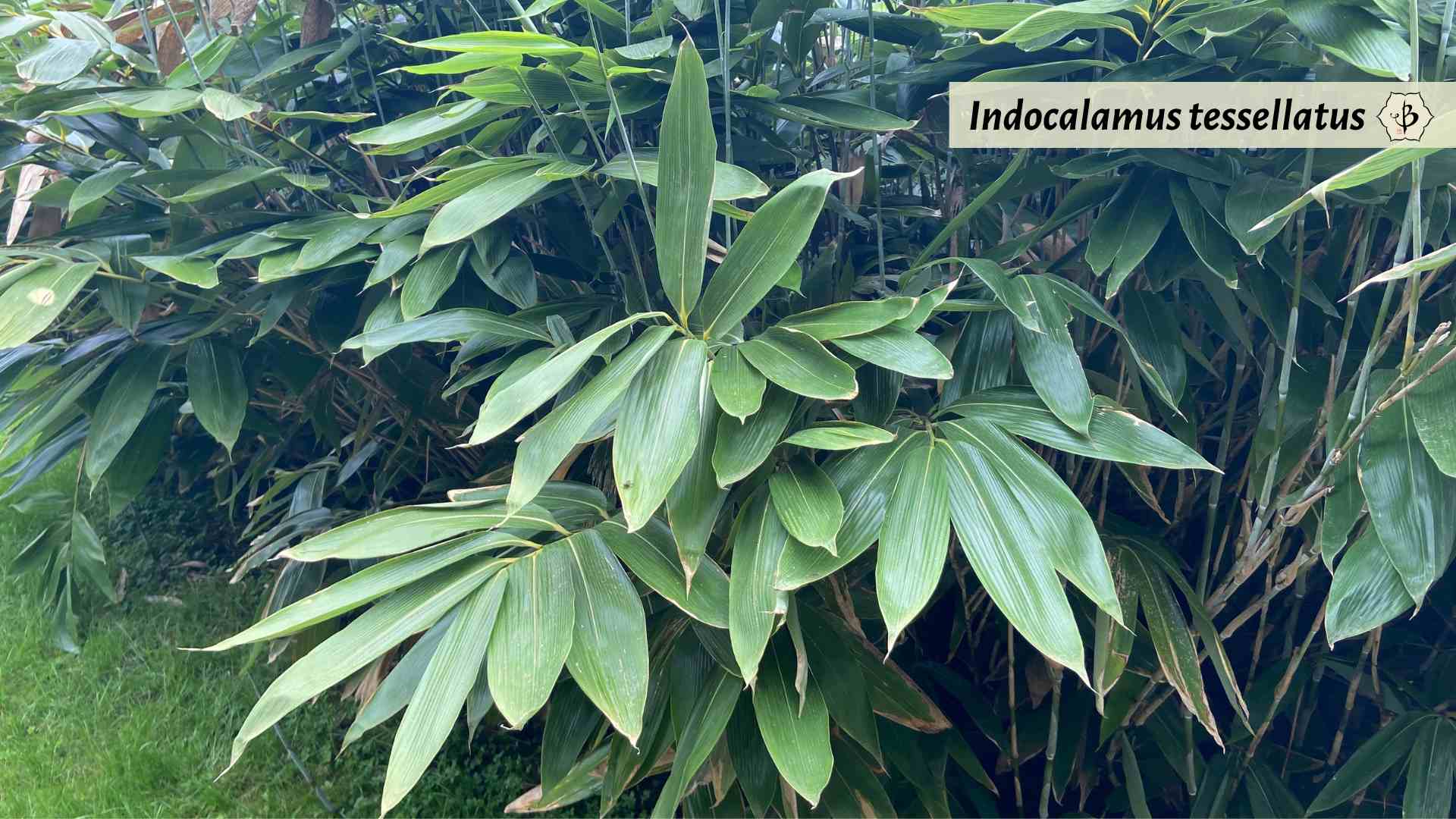When it comes to selecting the right species of bamboo for your garden, there are several criteria you might consider. First and foremost, the variety must be suitable for your climate. Then, many gardeners will want to decide between a running or a clumping bamboo. The size of the plant and the color of the culms will also be important considerations. Not everyone realizes it, but you can also choose between hollow-stemmed and solid-stemmed bamboo. If you’re in the market for something unusual, consider Indocalamus latifolius.
Indocalamus latifolius is a less common species of ornamental bamboo native to China, Japan, and Southeast Asia. Although it’s a running bamboo, Latifolius tends to grow in dense, compact thickets. Slender poles, growing close together, are only about a half-inch thick and no more than 10 feet tall. This is a good choice for smaller gardens, it’s cold-hardy to about 0º F, and is suitable for shady locations. Other interesting members of the genus include Indocalamus solidus and I. tessallatus.
This article — first published in March 2023 and most recently updated in May 2024 — is part of an ongoing series about different species and cultivars of bamboo. To learn more, check out some of these other detailed articles.
- BAMBOO SPECIES GUIDE
- A gallery of bamboo species
- Bambusa oldhamii: The most popular bamboo of all
- Black Bamboo: Phyllostachys nigra and others
- Blue Bamboo: Species that stand out
- Buddha’s Belly Bamboo
- Chimonobambusa quadrangularis: Square Bamboo
- Golden Bamboo: Phyllostachys aurea and others
- Semiarundinaria Fastuosa: Temple Bamboo

Characteristics of Indocalamus latifolius
As an ornamental bamboo, Latifolius has many favorable characteristics. Well adapted for cold climates, it can tolerate temperatures down to about 0º F. Like most cold-hardy bamboo, it has a running growth habit. But unlike most running bamboo, these plants are not very aggressive or quick to spread. Culms grow very close together, in what may resemble a clump. But eventually, the bamboo will spread into a wider patch indicative of its monopodial (a.k.a. running) rhizomes.
Sometimes, you want a massive timber bamboo that will tower over fences and houses. But in other situations, you need a compact bush that will fill a corner and keep a low profile. Latifolius generally grows no more than 10 feet, but that’s in optimal conditions. More often, the plant will only get 5 or 6 feet high.
At the same time, because the poles grow so close together, it makes an excellent hedge or privacy screen, helping you stay on good terms with the neighbors. An abundance of large, wide leaves — nearly a foot long — also add to the plant’s effectiveness as a privacy hedge.
With its short stature, Indocalamus latifolius provides a nice accent under tall trees or bigger bamboo varieties. And they’re actually much happier in a shady location. Planting it beneath a deciduous tree is a great idea, too, because when the tree drops its leaves in winter, the evergreen bamboo will keep the garden looking vibrant. It’s also one of the better choices for growing indoors, due to its size and shade tolerance.
Genus Indocalamus: Ornamental options
The genus Indocalamus contains more than 30 species, but besides Latifolius, only a couple of them are common among bamboo enthusiasts.
Indocalamus solidus, as the name suggests, is a solid-stemmed bamboo variety. Sometimes this unusual bamboo is recognized as a distinct species, but many authors consider it a subspecies of Latifolius. The plant is almost identical to Latifolius, except that the stems are not hollow.

Indocalamus tessallatus is best known for having the largest leaves of any bamboo. They can grow up to two feet long and four inches wide. For this reason, the species is sometimes simply referred to as Large Leaf Bamboo. But that can be confusing because a few varieties of the genus Sasa have similar nicknames. Like other members of the genus, the culms grow thin and close together, but fairly low to the ground.
Get indo it
To learn more about this fascinating subfamily of grasses, peruse the many hundreds of articles on my website. Whether you’re interested in bamboo taxonomy, bamboo farming, bamboo industry, or bamboo for ecology, you’re certain to learn something new.
FEATURE IMAGE: Indocalamus latifolius growing in Lyon, France. Photo by Fred Hornaday.




















